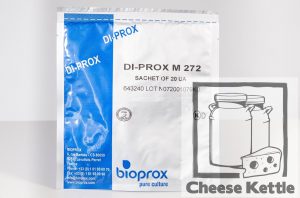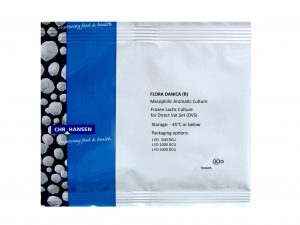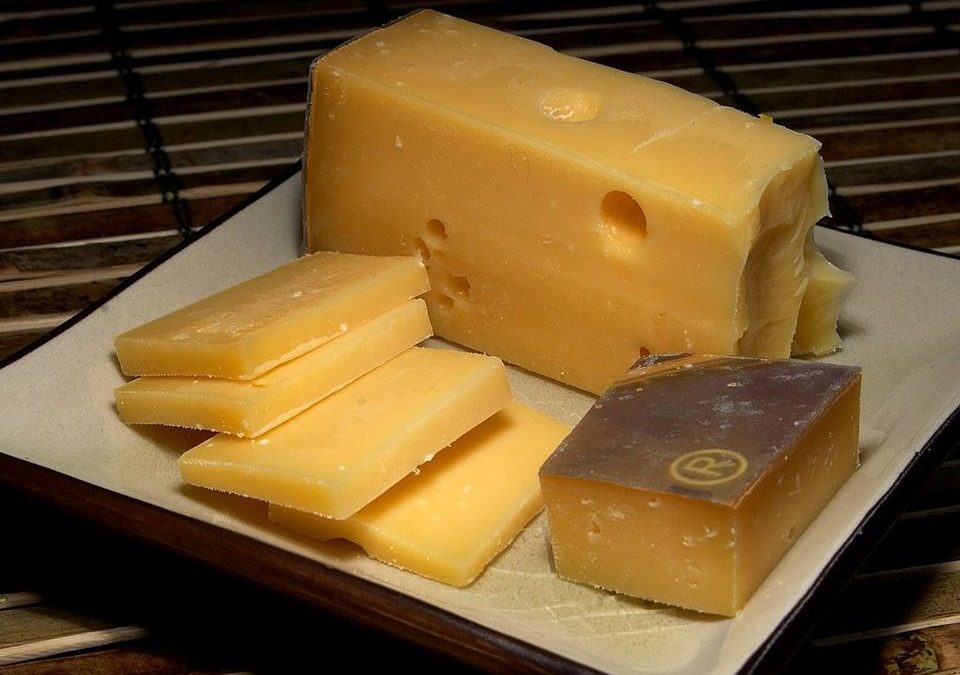Gouda is a semi hard cow’s milk cheese that originated from the Netherlands. It has a sweet, creamy, caramel-like, full-bodied flavor and a dense, springy texture. This cheese has a high fat and moisture content, making it a great melting cheese!
Longer aged gouda cheese becomes harder and develops a stronger nutty and buttery flavor. Gouda makes a stunning addition to your cheese board. Here’s a recipe for making Gouda cheese.
Yield: approximately 450g Gouda cheese
Aging: 3 months or more
INGREDIENTS
1. 10 L full cream milk (not ultra-pasteurized)
2. 1/8 tsp Danisco MM100 Mesophilic Culture
3. ½ tsp Calcium Chloride diluted in ¼ cup water (non-chlorinated)
4. ½ tsp liquid rennet mixed in ¼ cup of water (non-chlorinated)
5. cheese salt
6. 1 tablespoon Calcium Chloride
7. 1 gallon cold water
Equipment
1. large stainless steel pot
2. thermometer
3. curd knife and curd cutter
4. ladle or spoon for stirring
5. colander
6. cheese cloth
7. cheese hoop
8. cheese press
INSTRUCTIONS
Reminder: Sanitize all your equipment before you start making cheese.
1.Pour the milk into the pot and heat to 320 C.
2. Sprinkle the mesophilic starter culture on the surface of the milk. Allow the culture to rehydrate for 5 minutes. Stir thoroughly in an up and down stroke for a minute to fully incorporate the culture to the milk.
3. Cover the pot and allow it to ripen for 10 minutes.
4. Add the Calcium Chloride solution and the rennet. Stir the milk gently in an up- down stroke for 1 minute.
5. Cover the pot and allow the milk to set for 60 minutes or until you get a clean break.
6. Cut the curds into ½-inch cubes.
7. Let the curds rest for 5 minutes to heal, and then stir gently for 5 minutes. Leave the curds again for another 5 minutes.
8. Heat some water up to 600 C.
9. Pour off one third of the whey. Measure the amount of whey you pour off because we are going to replace that with an equal amount of warm water. Add the warm water back into the curds until the temperature reaches 330 C.
10. Stir again gently for 10 minutes, maintaining the target temperature.
11. Let the curds settle once again for 30 minutes.
12. Pour the remaining whey into the cheese cloth lined colander.
13. Line the hoop with cheese cloth. Transfer the curds from the pot into the hoop.
14. Press the cheese at 10 kg for 30 minutes.
15. Take the cheese out, undress, turn it over, redress and press at 13 kg for 14 to 18 hours.
16. Remove the cheese from the press.
17. Create a saturated brine solution. Measure 28 grams of salt and mix it to a gallon of water. Mix well.
18. Soak the cheese in the brine solution for 12 hours, flipping it over once every 6 hours.
19. Remove the cheese out of the brine solution. Pat dry the surface with a clean paper towel. Place the cheese on a draining mat and air dry it for 2 weeks, turning it once daily.
20. Wax the cheese and mature it in a cool dark place at 130 C, turning it once weekly.
The cheese should be ready to consume in 3 to 4 months, however, you can ripen it to a full 6 to 9 months to make the better and stronger flavor.
Try These Other Cheese Making Recipes
Are You Looking for Mesophilic Starter Cultures?
Here’s a quick guide to mesophilic cultures and what cheeses you can make from it.

Mesophilic culture for making cheese like Cheddar, Colby, Monterey Jack, Farmer Cheese and Cottage Cheese.

This mesophilic culture is used for making cheeses like Limburger, Brie Camembert, washed curd styles, sour cream and cultured butter.

This is a mesophilic culture for cheeses that have a lower than 29 C cooking temperature. Used for making cheeses like Gouda, Edam, Queso Fresco, Cream Cheese, Derby and Cambazola
Cheese Kettle also offers cheese and dairy processing equipment, and brewing and dairy consultancy services. Our highly experienced team brings smart solutions to your unique and complex production issues. Contact us today.





